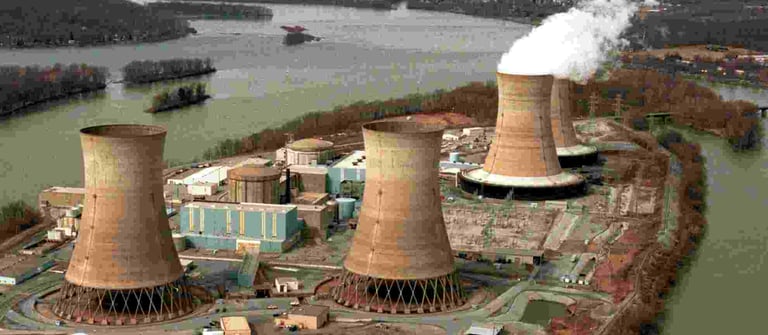Myths and Facts about Surviving Nuclear Fallout
When it comes to nuclear fallout, myths and misinformation can be more dangerous than the radiation itself. This article separates survival myths from real facts, giving you practical knowledge to stay prepared in case the unthinkable happens.
8/17/20252 min read
When people hear the term nuclear fallout, most picture old movies, doomsday bunkers, and scary images of mushroom clouds. Fear has fueled a lot of myths, and unfortunately, those myths can put lives at risk. If a nuclear incident were ever to occur, knowing the difference between survival facts and misconceptions could mean everything. Let’s break down some of the most common myths about nuclear fallout and uncover the truth behind them.
Myth 1: If You See a Blast, Survival Is Impossible
Many people assume that if you ever witness a nuclear explosion, survival is off the table. While the blast radius is deadly within a certain distance, not everyone near an explosion is doomed. Fallout shelters, reinforced basements, and even staying indoors in a concrete building can drastically increase survival chances. Radiation weakens over time, and those who act quickly can protect themselves.
Myth 2: Fallout Radiation Kills Instantly
Another common misconception is that nuclear fallout radiation works like a light switch, ending life instantly. In reality, radiation exposure is measured in doses. High doses can be lethal, but lower levels may cause sickness rather than immediate death. Protection, distance, and time are key factors. The longer you stay shielded and indoors, the safer you are.
Myth 3: You Need a High-Tech Bunker to Survive
Hollywood movies often show preppers surviving in expensive, underground bunkers stocked for decades. While those shelters are ideal, they are not the only way. A basement with thick walls, improvised barriers like sandbags, or simply moving to the center of a sturdy building can provide significant protection. Preparedness is not about luxury—it’s about smart planning.
Myth 4: Fallout Makes Food and Water Useless Forever
Many assume that once fallout spreads, no food or water can ever be consumed safely again. That is not entirely true. While radioactive particles can contaminate exposed food and water, stored supplies remain safe. Sealed containers, underground storage, and clean water reserves are key to survival. Over time, the environment recovers as radiation decays, and soil and crops can become safe again.
Myth 5: Fallout Stays Dangerous for Hundreds of Years Everywhere
Radiation does not stay equally strong forever. The rule of thumb known as the "7-10 rule" explains that radiation drops significantly as time passes. For example, after 7 hours, fallout is about one-tenth as strong. After two days, it falls to just one percent of its original level. This means sheltering for even 48 hours greatly reduces risk.
Myth 6: You Can Tell Radiation Is Present by Sight or Smell
Unlike smoke or gas leaks, radiation cannot be detected by human senses. This has led to dangerous assumptions in the past. You cannot see, smell, or taste radioactive particles. That is why having a basic radiation detection device, like a Geiger counter, can be life-saving. Awareness and proper tools are vital.
Myth 7: Nuclear Fallout Equals Certain Global Doom
It is easy to think that nuclear fallout would end life on Earth instantly. While a large-scale nuclear war could cause devastating long-term effects, isolated incidents or accidents do not guarantee worldwide destruction. Survival is possible for individuals and communities that prepare with knowledge and supplies. Panic spreads faster than radiation, and truth is the best weapon against fear.
Conclusion
Nuclear fallout is a frightening concept, but survival is not hopeless. Separating myths from facts gives us a clear picture of what to do in a crisis. Fallout does not always kill instantly, food and water can remain safe, and protection can be as simple as staying indoors in a sturdy building. Preparation and understanding are far more powerful than fear.
Also read - Beginner’s Guide to Prepping: How to Start Without Feeling Overwhelmed

